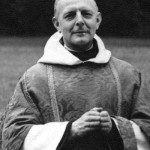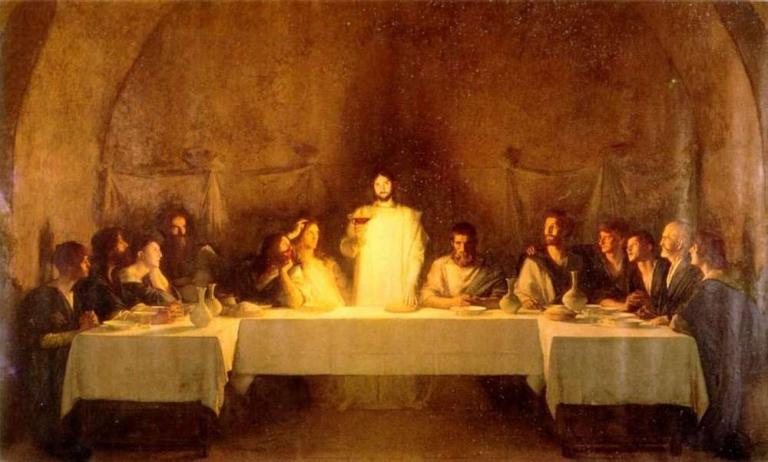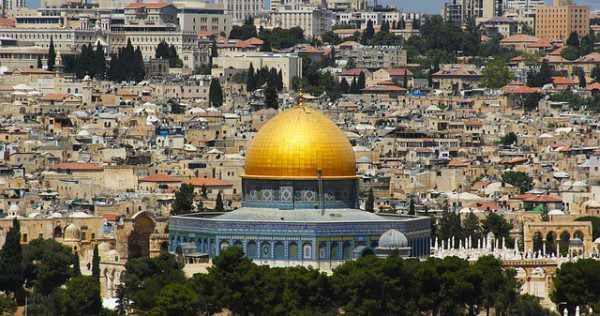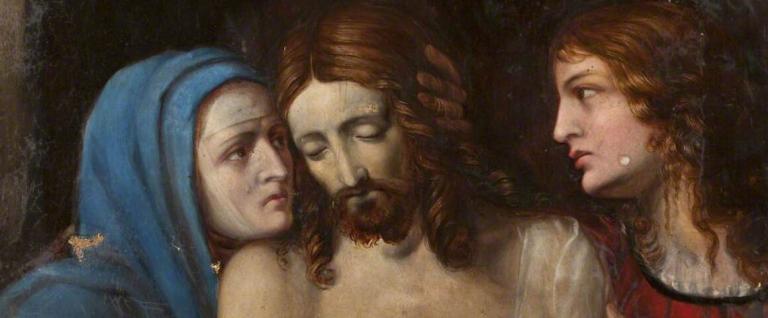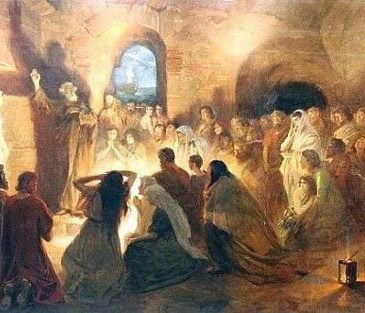 Continuing from Dix’s Shape of the Liturgy. . . .
Continuing from Dix’s Shape of the Liturgy. . . .
Chap 10: The theology of consecration
Dix argues that the Eucharist manifests the true being of the Church in the following way. It is the act of Christ in His Body, the Church, transferring all who are in Him into the eternal Kingdom beyond time. The heavenly Christ as the abiding “propitiation for our sins” [1 Jn 2.2] is the supernatural life of all who are His, who in the eucharist are at once “offered” and “brought to” the Father. The individual fulfills himself in the world discharging his proper liturgy (as bishop, cleric or layman) whose climax is his share in the “doing” of the great corporate action of that Body prescribed by our Lord. 268
Because Christ is One in Himself, any particular Eucharist is not the act of the local church only but the act of the whole catholic Body of Christ throughout the world and the ages. It is the “coming” to the Father of redeemed humanity “in Christ.” 269
The celebrant is the “high-priest” in the midst of the priestly people. [Just as in ancient Israel there were the one High Priest, several high-priests, and thousands of priests, amidst a whole people called priestly.] 271
Consecration is nothing else but the acceptance by the Father of the sacrifice of Christ in His members–the sacrifice of “the Body of Christ” in all its meanings. 272
It was the common Jewish expectation that the “thank-offering” alone of all the Levitical sacrifices would continue during the days of the Messiah (Pesachim 79a). 273
In pre-Nicene eucharists, the consecration was indebted to the Jewish berakhah or blessing of food, which presumed that setting apart food to God brought a blessing or holy state to that food. So Irenaeus says, “The bread receiving the epiklesis (naming) of God is no more common bread but eucharist” (Adv. Haer. 4.18.5). Dix suggests in a footnote that in the second century every use of epiklesis is connected with Jewish berakhah, but that as connections with Judaism diminished in the 3rd and 4th cs. the word loses this meaning. In the second century Christian writers associated the Spirit with the Word in such a way as to suggest Spirit-as-Presence-of-God in a Jewish sense of recalling the Name. 275-76
An important change appears with Cyril of Jerusalem in the 4th c. Christ is the passive victim now at the Eucharist, whose Body and Blood are “made” by the Holy Spirit, so that the Church might offer Him to the Father in propitiation for its sins. The older tradition was that Christ is the active agent in the eucharist, who offers the Church as found “in Him.” 278
An old caricature is that the Western Church finds its entire inspiration in Calvary, while the Eastern Church ia focused on the Resurrection. There is no basis for this distinction in the actual liturgies of East and West. The Western rite is the anamnesis of the passion and resurrection and ascension of the same Christ Your Son our Lord–just as it is in the East. 288
The Eastern Church claims that the petition for consecration (the epiklesis) is the moment of consecration. Some scholars claim this is what was primitively universal, but it is hard to find that idea before the 4th c. 302

